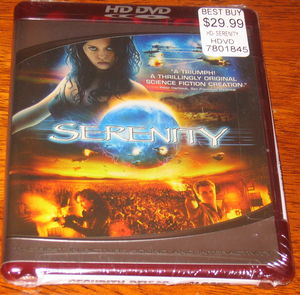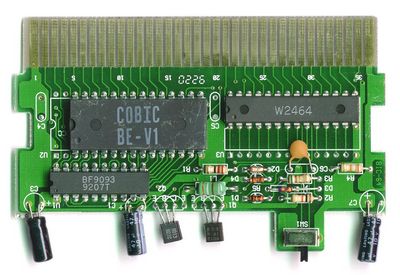The IMDb Studio Briefing reported today that “HD DVD To Debut Today”. So I ran over to Best Buy and picked one up. Seriously. Here it is:

No, I don’t have a player yet. That never stopped me from buying PlayStation or Xbox games just for studying the multimedia (that was different because I still have computer hardware that can read the raw sectors). Best Buy also had players available but I do not intend to get any hardware until an HD-DVD ROM drive becomes available. Ah, the burden of early adoption.
Best Buy had the HD-DVD material in the high-end home theater department. I asked if they had any HD-DVDs in yet. The employee said the titles were behind the counter but then eyed me suspiciously and asked if I was from Toshiba. I’m not sure what that exchange was about but after I assured him that I was sincerely interested in a purchase he brought out the 3 launch titles– Serenity, The Phantom of the Opera, and The Last Samurai. I certainly wasn’t the only early adopter. At this same time, there were other customers entering the same department asking for the HD-DVD player and all 3 launch titles. Take another look at those 3 launch titles. Do you think that anyone would actually like all 3 of those movies? My guess is that these people were really interested in the purchase simply for the sake of having the latest technology.
Their demo HD-DVD players were doing duty with some sort of demo material with a split screen that contrasted high definition vs. standard definition. The demo struck me as — what’s the word — bogus. Come on– standard definition can’t possibly look that bad. Can you say “blur filter”?
Click [more] to see scans of everything in the case so you know what the next generation looks like.
Continue reading →



